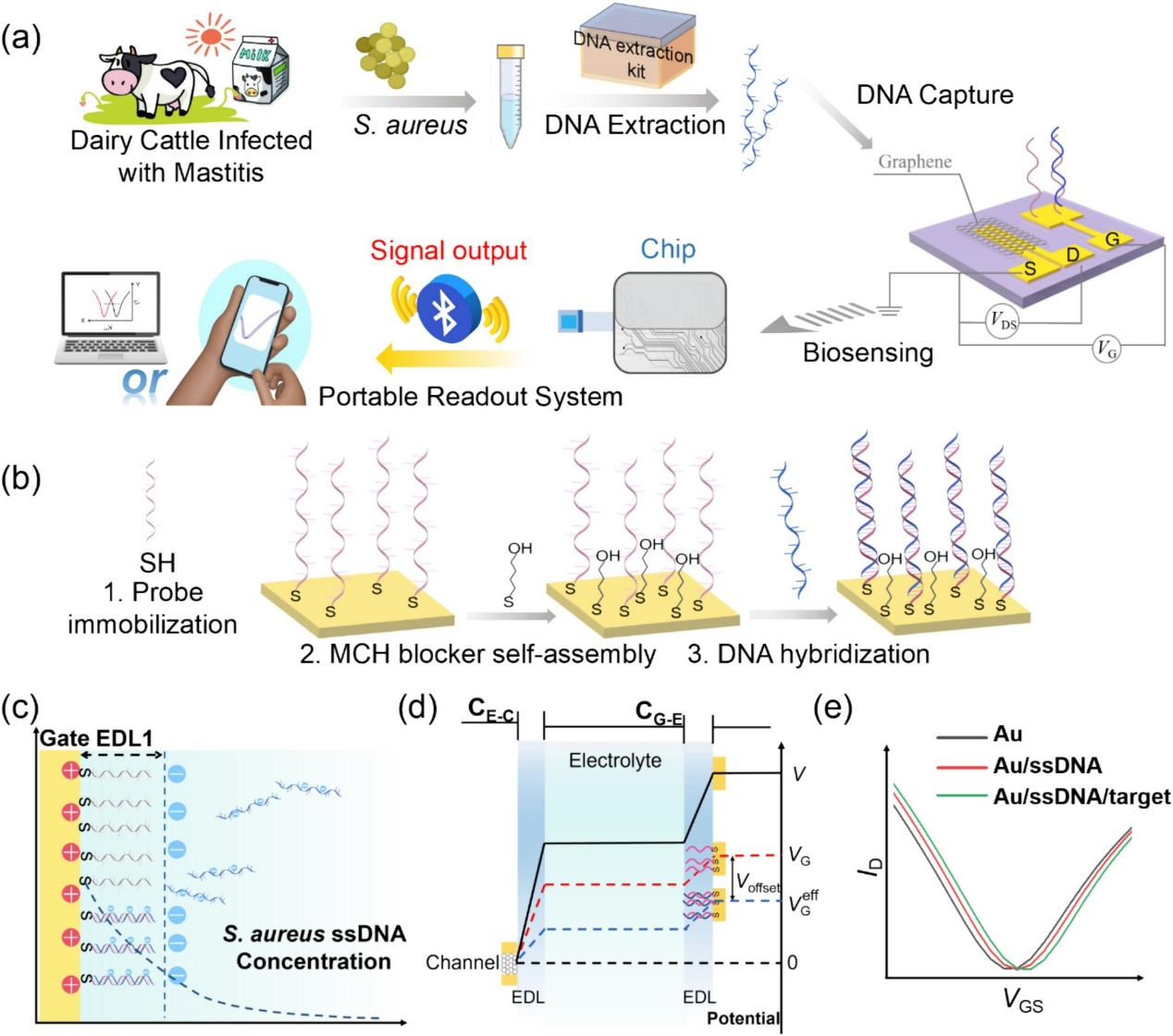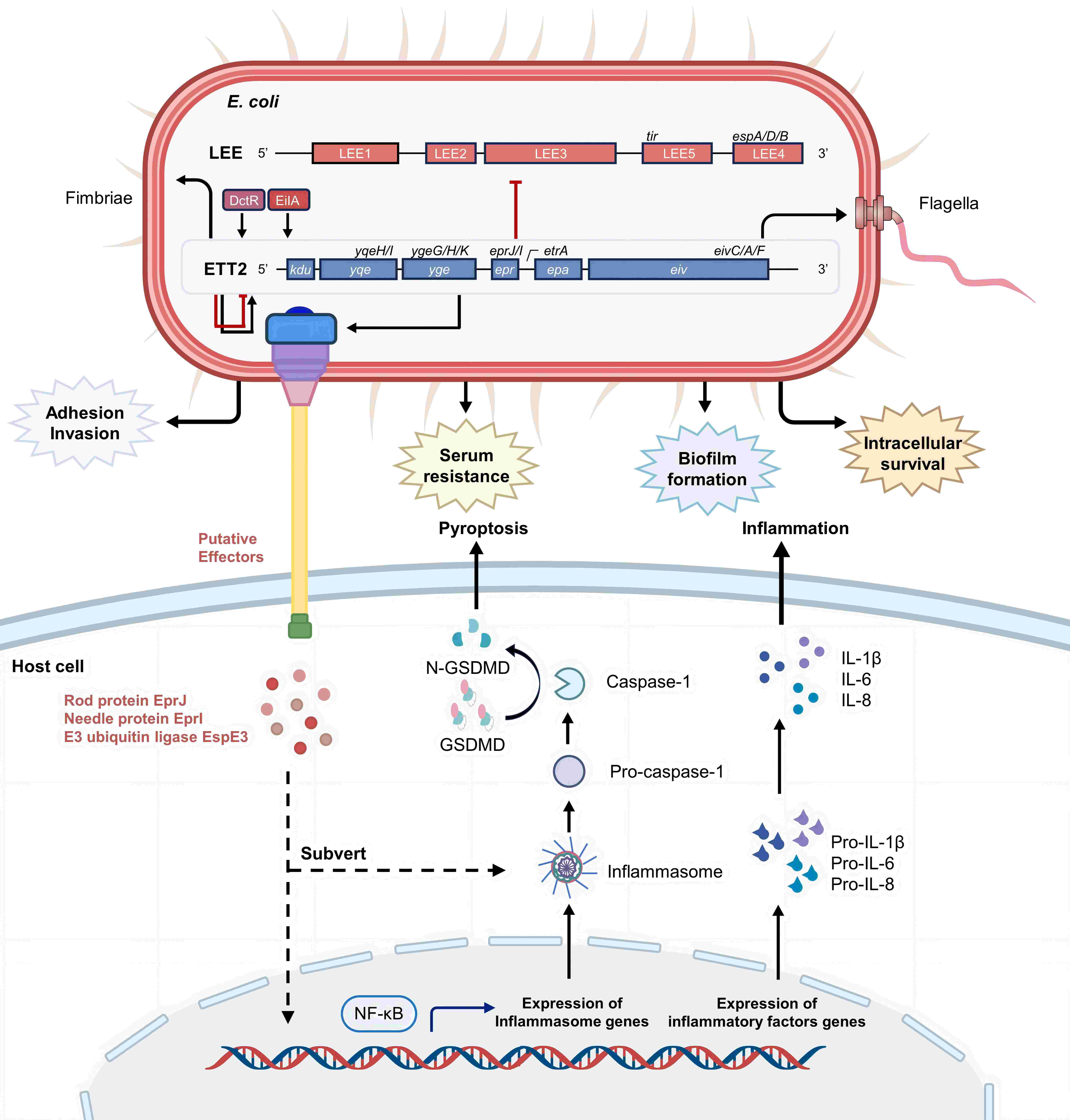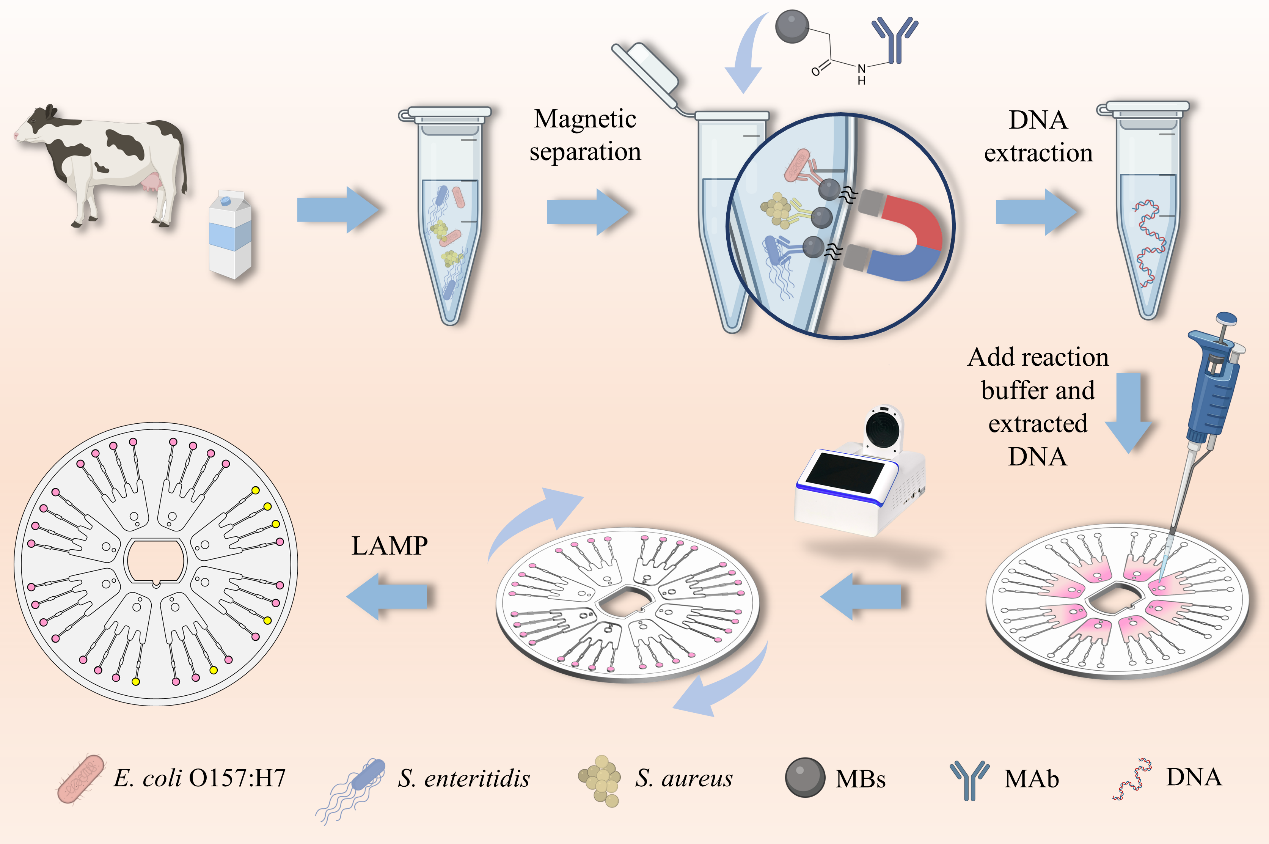
The Food Safety Research of Animal Origin team of SHVRI, CAAS, in collaboration with Hubei University and Shanghai Jiao Tong University, has developed an amplification- and labelling-free rapid detection method specifically targeting the genome of Staphylococcus aureus. This finding have been published in Chemical Engineering Journal.
Background
As a prominent contributor to foodborne illnesses globally, S. aureus pose a considerable threat to food quality and public health. Although traditional PCR, fluorescent quantitative PCR and other nucleic acid detection methods are highly accurate, they usually require complex labelling procedures and a long amplification reaction process, and are accompanied by problems such as time-consuming detection, complex analysis procedures, bulky equipment, and dependence on professional and technical personnel.
Progress
In this study, a low-cost and highly sensitive liquid-gate graphene transistor biosensor was used to optimize the type and number of bases of the DNA probe. This was achieved by careful screening of the target DNA sequence and specific modification of single-stranded DNA on the gold sensing gate surface, thereby improving its conformation on the electrode surface. This optimization significantly improved the hybridization efficiency of the probe to the S. aureus genomic DNA target. Using this interface engineering technique, the researchers successfully achieved rapid quantitative detection of S. aureus . Moreover, the results showed that the sensor possessed a wide linear detection range (10-17 M ~ 10-8 M).
Summarily, the biosensor has been integrated into a portable detection system in this study, streamlining signal acquisition, processing, transmission, and display, thereby facilitating on-site and real-time monitoring. This novel strategy represents a significant advancement in the field of nucleic acid detection, offering a rapid, cost-effective, and user-friendly alternative to traditional methods, with immense potential for applications in food safety, clinical diagnostics, and environmental monitoring.

Funding
This study was supported by the Science and Technology Innovation Action Plan Project of Shanghai Municipal Science and Technology Commission, and the Key Project of Shanghai Science and Technology for Agricultural Development. Master's student Zheng Jiayuan was the first author of this paper, and Prof. Jiang Wei from SHVRI, CAAS, associate researcher Tang Wei from Shanghai Jiao Tong University and Prof. Li Jinhua from Hubei University were the co-corresponding authors.




